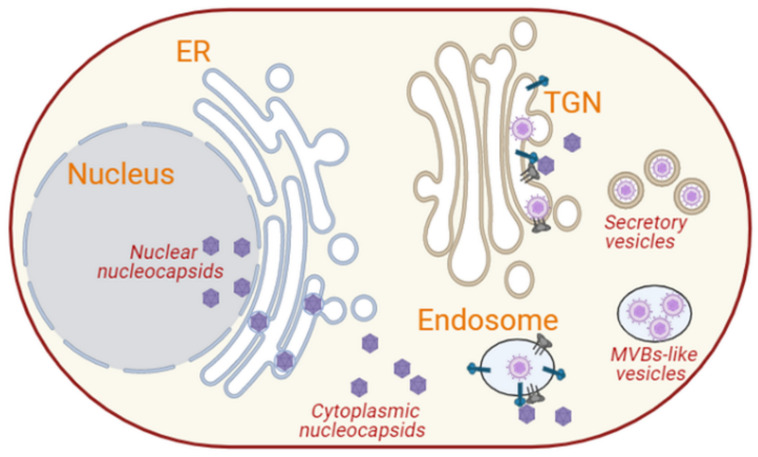Figure 7.
Intracellular membrane rearrangements induced by herpesviruses. Herpesviruses replicate and assemble their capsids in the nucleus, in which their glycoproteins are also targeted. They transiently acquire a primary envelope when crossing the inner nuclear membrane and lose it when exiting from the outer nuclear membrane. This passage also involves the disassembly of the nuclear lamina. Capsid and glycoproteins are transported from the ER to the TGN, where they interact with the cytoplasmic capsids to form intraluminal virions by inward budding. These viral particles are then transported to the plasma membrane and released extracellularly. Some herpesviruses, such as HHV-6, assemble their viral particles at the endosomes, generating MVB-like compartments that fuse with the plasma membrane to release the luminal virions (image created in Biorender).

